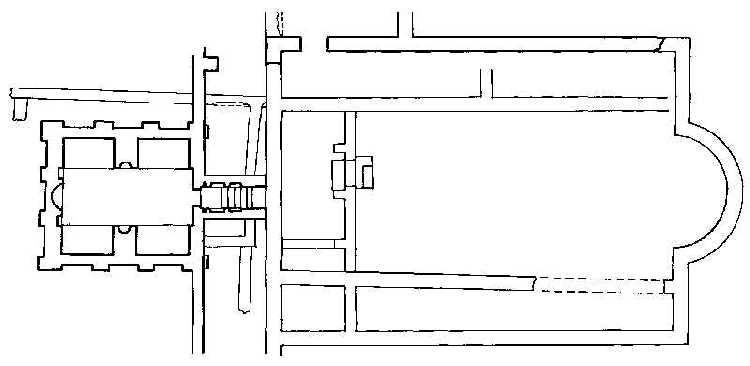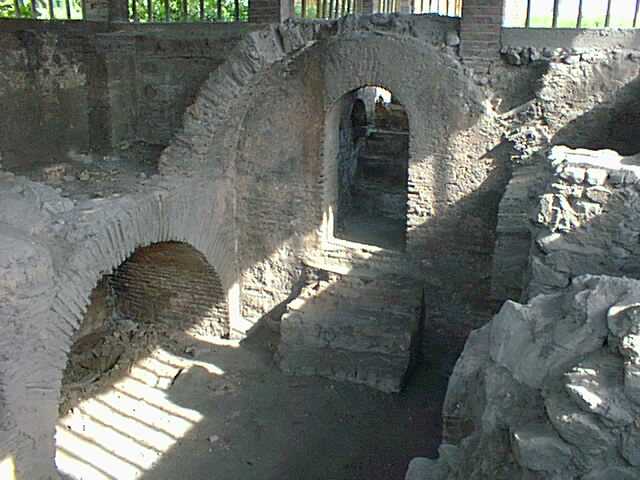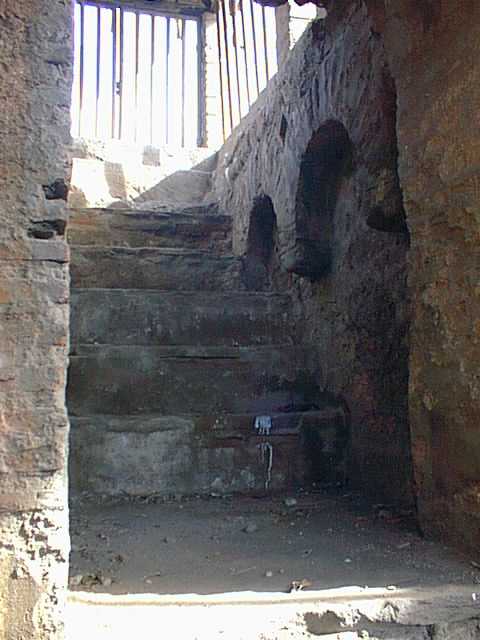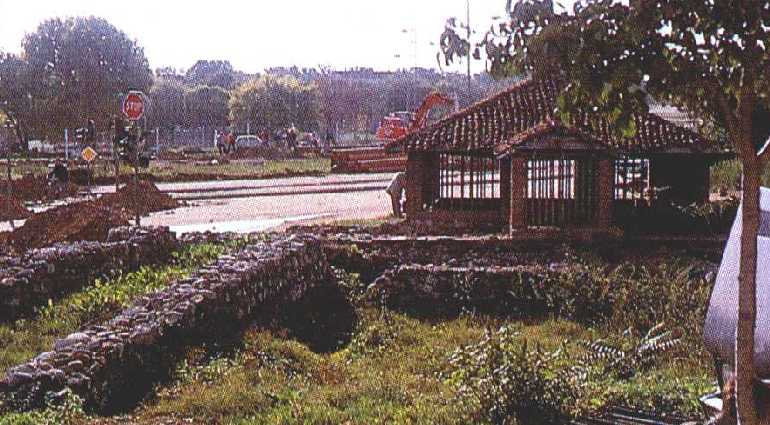

The basilica with a martyry, interior
The Early-Christian basilica with a martyry is located in the town area called "Jagodin Mala" at the Late-Roman and Early-Christian necropolis site. It was discovered in 1933/34, while the archeological excavations in 1953 stated a three-aisled basilica on its east side.

The basilica with a martyry, base
The monumental martyry and the impressive dimensions of the church represent a specific cult building which had stored the relics of widely known martyrs. The historical sources show that Niš was famous worldwide in the 4th century for its local martyrs. The representative basilica with a martyry most probably was a church dedicated to the cult of Niš martyrs.

The basilica with a martyry, interior
The Niš martyry has a rectangular base (8 x 8.5 m), with a small niche on the western side. Its interior is divided into four barrel-vaulted niches, two in the southern and two in the northern side, in which the deceased had been interred. Like in the Roman tradition, the martyry was marked with a tombstone structure. The eastern side contains an entrance that was closed by a concave molded stone slab. Flanked staircase leads from the martyry to the narthex of the basilica.

The basilica with a martyry, entrance
The basilica has three aisles (24 x 17 m) with a semicircular apse in the east part. It is supposed that it was built later than the martyry, with which it is functionally connected. The interior wall surfaces of the martyry and the basilica had been covered with frescoes, of which only fragments have remained visible.
When discovered, the interior contained, among other things, some residues of cloth from the garments of the dead, Christian inscriptions, a marble capital and a lead sarcophagus.
The basilica with a martyry, lead sarcophagus
The early-Christian capital, cut of white, fine-grained marble, is decorated with the attributes of Christianity. The shallow relief includes crosses with wreaths and a dove with a branch, while the surrounding space is decorated by stylized acanthus leaves. All the four sides, as well as the lead sarcophagus lid, are decorated with plastic figural presentations. Clearly recognizable groups of three figures impose the idea of the Holy Trinity. The rich encrustation of the sarcophagus, resembling the ones found in the Middle East and Greece, leads to the conclusion that the relics of saints might have been kept in it. The origin of the early-Christian basilica with a martyry is dated either in the end of the 4th, or in the 5th century.

The basilica with a martyry, western wall
In accordance with the contemporary custom to create the cult in the town where the martyr was buried, Niš had its famous martyrs and was well known by their relics all around the Christendom. Their presence in Niš as a strongpoint of culture and religion had great importance for the town itself.